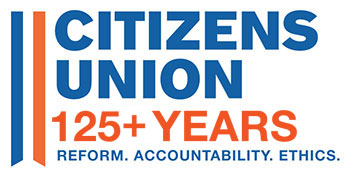Originally Published: October 4, 2010
New York State’s redistricting process rigs elections to benefit legislative incumbents and political parties by undermining the democratic principle of “one person, one vote,” allowing legislative districts with huge population disparities, and minimizes the number of “competitive” legislative districts with close party enrollments to protect incumbents, according to a report released today by a coalition of civic groups. The groups argued that New York State allows “gerrymandered” districts with vast differences in population size and that, while technically legal, undermine democratic principles. The report, New York State’s Redistricting Process: The Case for Reform, examined the state’s redistricting practices and found:
- Finding #1: Only 29 of 212 state legislative districts (14 percent) have been drawn within one percent of the
“ideal size.” In a representative democracy, ensuring districts of similar size ensures fair representation. - Finding #2: Only 25 of the 212 state legislative districts (12 percent) were drawn to have a similar number of
major party enrollments. The enrollments in the rest favor one party or another by a wide margin. This small
number drastically limits the number of “competitive” elections in New York. This lack of competition helps
insulate lawmakers from the wishes of their constituents. - Finding #3: Mapmaking practices have allowed for the creation of district shapes that ignore the state’s
constitutional requirement that districts be “compact.” - Finding #4: Mapmaking practices have been used to remove significant electoral threats that challengers
posed to incumbent legislators. - Finding #5: During the period 1980 through 2008, nearly 3,000 state legislative general elections were held,
yet in only a tiny fraction of those races (39) were challengers successful in knocking out incumbents. This
staggeringly high re-election rate is a direct consequence of New York’s system of legislative redistricting. - Finding #6: As a result of mapmakers’ efforts to limit electoral competition, incumbents win – and win big.
From the general elections in 2002 through 2008, over 65 percent of Senate winners won by more than 2 to 1
or greater. Nearly 75 percent of Assembly winners won by that margin or greater. Roughly 5 percent of races
were close.
The groups found that “[a]s a result, New York State’s legislative politics are dominated by the political status quo.” The groups also unveiled their effort to educate New Yorkers about the need to support reforms. The groups are planning speaking presentations across the state to lay out the case for reform.
The groups argued that lawmakers should support legislation creating an independent redistricting commission to create fair legislative districts in New York State and to ensure that districts are drawn to benefit the public’s best interests.
Download as a PDF: [bsk-pdf-manager-pdf id=”62″]
